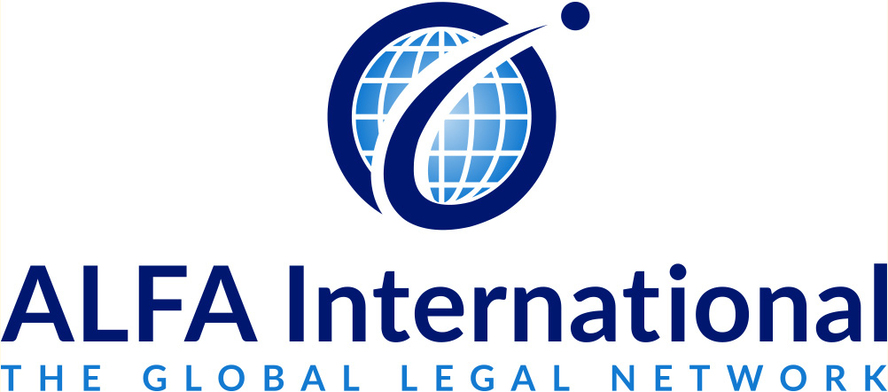On April 1, 2020, the US Department of Labor issued regulations implementing the paid sick leave (PSL) and expanded FMLA (EFMLA) leave portions of the Families First Coronavirus Response Act (FFCRA). A full description of all of the provisions of the regulations is beyond the scope of this blog, but some of the key highlights follow. For more details and guidance, employers should consider contacting the Employment Law practice group at Stafford Rosenbaum at 608.259.2663 or mvergeront@staffordlaw.com.
Reasons for PSL Leave
The regulations more fully explain the reasons for which PSL leave can be obtained. Here are a few examples of what the regulations provide:
- An employee is not entitled to PSL if an employer has no work available for the employee even if the employee needs time off for a PSL or EFMLA-qualifying reason.
- Quarantine or isolation orders include a broad range of governmental orders, including orders that advise some or all citizens to shelter in place, stay at home, quarantine, or otherwise restrict their own mobility.
- An employee is not entitled to leave for self-quarantine unless the employee has received medical advice.
- An employee is entitled to leave for self-quarantine based on medical advice if the medical advice is based on a belief that the employee:
- Has COVID-19;
- May have COVID-19; or
- Is particularly vulnerable to COVID-19
- An employee is not entitled to PSL if the employer has work that the employee is able to do remotely. However, keep in mind that an employee who is ill or who is a caretaker may not be able to work a full schedule and, for hours the employee is not able to work, the employee would get PSL.
- An employee is entitled to PSL and EFMLA leave to care for a child whose school is closed or daycare is unavailable only if the employee is the only available suitable person to provide such care. For example, if one of the child’s parents does not have a job and is therefore available to provide care, the employee who chooses to stay home under those circumstances would not be entitled to PSL.
Amount of EFMLA Leave
An eligible employee can take up to 12 work weeks of EFMLA leave from April 1, 2020 through December 31, 2020. However, any time taken for EFMLA counts towards the 12 weeks of leave available in a 12-month period for other types of FMLA-qualifying leave. So, for example, if an employee took eight weeks of FMLA for the birth of a child prior to April 1, 2020, the employee would only have four weeks of leave for any other kind of FMLA leave, including EFMLA. However, even if the employee has no remaining FMLA for EFMLA purposes, he/she would still be entitled to PSL for qualifying reasons. The regulations give other examples of how EFMLA leave intersects with FMLA leave for other qualifying events.
Substitution of Paid Leave during EFMLA
An employer cannot require an employee to use paid leave available under an employer’s leave policies prior to using PSL.
During the first two weeks of unpaid EFMLA, an employee gets to choose whether he/she wants to elect PSL or any accrued paid leave he/she would qualify for under the employer’s existing policies, such as vacation or general paid time off. The employer cannot force the employee to use the employer-provided paid leave and if the employee does not choose to do so, he/she remains entitled to use such leave at a later date. Employees who elect PSL during these two weeks will only receive 2/3 of their regular rate of pay. However, if they choose to elect accrued leave available under an employer’s policies, the employee must be paid the full amount of the regular rate of pay.
For the 10 weeks of paid EFMLA leave, which is paid at 2/3 of the employee’s regular rate of pay, the employer and employee can agree to supplement the EFMLA payment with other employer-provided leave, so that the employee receives full pay for each hour of EFMLA leave. However, both the employer and the employee must agree to do so. Neither the employer nor the employee can force such supplementation. The employer would not be entitled to a tax credit for the supplemental payment.
Small Business Exemption
Employers with fewer than 50 employees are exempt from providing leave to care for a child whose school or daycare is closed if providing such leave would jeopardize the viability of the business as a going concern. This exemption does not apply to other types of qualifying leave. To qualify for the exemption, an “authorized officer of the business” must determine that:
- The leave requested would result in the small business’s expenses and financial obligations exceeding available business revenues and cause the small business to cease operating at a minimal capacity;
- The absence of the employee requesting such leave would entail a substantial risk to the financial health or operational capabilities of the business because of their specialized skills, knowledge of the business, or responsibilities; or
- There are not sufficient workers who are able, willing, and qualified, and who will be available at the time and place needed, to perform the labor or services provided by the employee requesting leave and these labor or services are needed for the small business to operate at a minimal capacity.
Employers must create documentation that a determination that one of these factors warrant the exemption from the leave requirement for a particular employee has been made. The documentation must be maintained for four years.
Small businesses electing this exemption still must put up the DOL poster regarding EFMLA leave.
Intermittent Leave
Employees who have to work at the physical place of employment can take intermittent PSL leave when the leave is to care for a child whose school or daycare is closed or unavailable, but only if the employer agrees.
Employees able to work remotely can take intermittent PSL leave for any qualifying reason if the employer agrees that he/she can do so.
While the regulations say that this agreement need not be in writing, best practice is to put it in writing and have the employee sign it.
Employees Notice Obligations
For leave to care for a child whose school or daycare is closed or unavailable, the employee must give notice of the need for PSL or EFMLA leave “as soon as practicable” if the leave was foreseeable. For any other type of qualifying leave, an employer can require employees to follow reasonable notice procedures for the need for such leave only after the first workday for which the employee takes PSL. Notice is sufficient if it comes from a “spokesperson” of the employee instead of directly from the employee. If the employee fails to give proper notice, the employer should give him/her notice of the failure and an opportunity to provide the required documentation prior to denying the leave request.
It is reasonable to require oral notice and sufficient information for the employer to determine whether the requested leave is qualifying leave. It is generally also reasonable to require employees to comply with the employer’s usual notice and procedural requirement for requesting leave. However, the employer may not require documentation from the employee beyond the following:
- For any type of leave, the employee’s name, dates for which leave is requested, the qualifying reason for the leave and an oral or written statement that the employee is unable to work because of the qualified reason for leave.
- For PSL due to the inability to work because of a COVID-related government order of quarantine or isolation, an employee must also provide the name of the government entity that issued the order.
- For PSL due to self-quarantine upon medical advice, the employee must also provide the name of the health care provider who gave the advice.
- For PSL to care for an individual subject to a quarantine or isolation order or who is in self-quarantine upon medical advice, the employee must also provide the name of the government entity that issued the order or the name of the health care provider who provided the advice.
- For PSL or EFMLA leave to care for a child due to school or daycare closure or unavailability of a daycare provider, the employee must also provide the name of the child, the name of the school or daycare or daycare provider, and a representation that no other suitable person will be caring for the child during the PSL or EFMLA.
Employers may also request additional material as needed for the employer to support a request for tax credits pursuant to the FFCRA. For information employers must collect to receive the tax credits, see the IRS guidance at https://www.irs.gov/newsroom/covid-19-related-tax-credits-for-required-paid-leave-provided-by-small-and-midsize-businesses-faqs.
Employers are not required to provide PSL or EFMLA leave to employees who do not provide materials sufficient to support the applicable tax credit.
Recordkeeping
Employers need to retain all documentation of the notice of leave provided by an employee for four years whether leave was granted or denied.
If an employee provided oral statements to support his/her request for PSL or EFMLA, the Employer is required to document the request.
The regulations advise employers to maintain the following records for four years to claim tax credits for PSL and EFMLA:
- Documentation to show how the employer determined the amount of paid sick leave and expanded family and medical leave paid to employees that are eligible for the credit, including records of work, remote work and PSL and EFMLA;
- Documentation to show how the employer determined the amount of qualified health plan expenses that the Employer allocated to wages;
- Copies of any completed IRS Forms 7200 that the employer submitted to the IRS;
- Copies of the completed IRS Forms 941 that the employer submitted to the IRS or, for employers that use third party payers to meet their employment tax obligations, records or information provided to the third party payer regarding the Employer’s entitlement to the credit claimed on IRS Form 941; and
- Other documents needed to support the request for tax credits pursuant to IRS applicable forms, instructions, and information for the procedures that must be followed to claim a tax credit. For more information on this requirement, see https://www.irs.gov/newsroom/covid-19-related-tax-credits-for-required-paid-leave-provided-by-small-and-midsize-businesses-faqs.
Health Insurance
Employers are required to maintain health insurance coverage for employees taking PSL or EFMLA on the same terms as were in place prior to leave. Among other things, this means that the employee must continue to pay his/her share of the premium during the leave. If the employee chooses not to, the employer can drop coverage, but coverage must be immediately reinstated when the employee returns from such leave.
Determining Whether an Employee is Considered Full-Time for PSL Entitlement
If an employee is regularly scheduled to work 40+ hours per week, they are considered full time for the purposes of PSL and are entitled to the full 80 hours of PSL. Determining whether someone is full time if their work hours vary from week-to-week is a more difficult question and the regulations spell out how to make this determination.
Determining Hours of PSL Available to Part-Time Employees
Employees who are not full-time employees and who work a regular schedule are only entitled to an average of the hours worked in a two-week period. For part-time employees whose hours vary, the regulations provide a rather complicated means of calculating the average hours worked.



